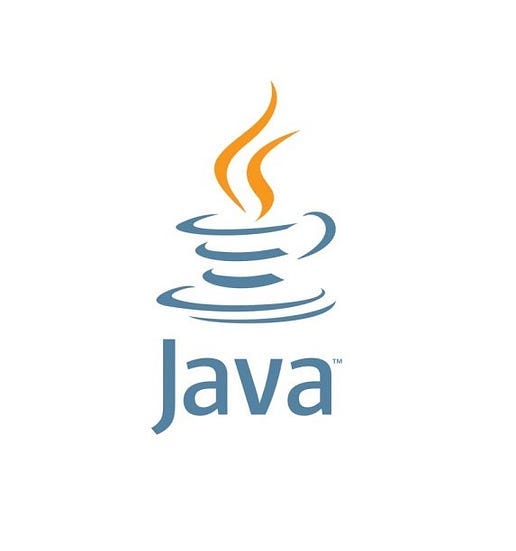Programming News
Dev
286

Image Credit: Dev
WWDC 2025 Exposed: 7 Announcements That Will Change Your App Forever
- WWDC 2025 by Apple focused heavily on developers, introducing significant changes across various platforms.
- A new design aesthetic called “Liquid Glass” was implemented, offering a modern look but facing some criticism for potential accessibility issues.
- Key app updates included a keyboard redesign, changes in the Photos app, Safari improvements, and a new Xcode tool for icons.
- The event highlighted the benefits for cross-platform frameworks like React Native and Flutter, with React Native leveraging Apple's updates more effectively.
- Announcements regarding containerization and open-source gains were made, including the integration of Docker-in-Swift and FoundationDB.
- Game Porting Toolkit 3 and enhancements in WebGPU support for Safari users were discussed, aiming to streamline game ports and improve gaming experiences.
- Xcode AI tools were introduced, but faced glitches in beta, and Apple's AI strategy, particularly around Siri and on-device models, received mixed reviews.
- A significant announcement was the end of the Intel-to-Silicon transition, with Rosetta 2 retiring by 2028 and developers urged to focus on Apple Silicon.
- Overall, WWDC 2025 showcased advancements but also highlighted areas where Apple may need further improvement, such as in AI and cross-platform support.
Read Full Article
17 Likes
Medium
17

From Disheveled to Dependable: My Painful but Powerful Journey into Data Science Professionalism
- The article narrates a personal journey from facing infrastructural challenges in Nigeria to becoming a dependable data science professional.
- Challenges included dealing with power cuts, unstable internet, and lack of a dedicated workspace, leading to unprofessional appearances during meetings.
- The author invested in a stable WiFi network and home office, emphasizing the importance of setup for professionalism.
- Learning collaboration tools like Slack and communication skills was initially a culture shock, but the author adapted through observation and practice.
- Emphasis was placed on understanding that coding proficiency comes through repetition and practical application, learning to code like a craftsman.
- The cost of isolation and communication breakdowns highlighted the importance of overcommunication and sharing progress incrementally with the team.
- Self-management in a high-performance culture was crucial, requiring documenting workflows and seeking help effectively when facing challenges.
- Transitioning from a data analyst to a software-oriented thinker involved training in software engineering and understanding real systems and tools beyond data models.
- Professionalism was described as more than just performance metrics, focusing on project structure, business objectives alignment, and constructive feedback acceptance.
- The article concludes with insights on competence, stability, communication, coding proficiency, and the value of feedback in the journey towards becoming a reliable data science professional.
Read Full Article
1 Like
Medium
412

Image Credit: Medium
JavaScript in 2025: Ditch the Old, Embrace the New
- JavaScript has evolved significantly since ES6 in 2015, and it's time to move away from old habits.
- ECMAScript 2025 introduces revolutionary proposals:
- 1. Pattern Matching offers a sophisticated way to handle complex conditional logic and destructure data effectively.
- 2. Deferred Module Evaluation with defer import syntax improves page load performance for larger applications.
- 3. Records and Tuples bring immutable object-like and array-like data structures, enhancing state management and functional programming.
- 4. Pipeline Operator (|>) simplifies functional chaining for cleaner code.
- 5. Async Context Propagation eases maintaining context across async operations in async/await.
- JavaScript in 2025 is more developer-friendly with these enhancements, offering cleaner and more efficient code.
- Tools like ServBay make managing modern Node.js environments and web development stacks easier for macOS users.
- It streamlines the setup and management, allowing developers to concentrate on coding.
- Developers are encouraged to embrace new JavaScript features for better code quality and productivity.
Read Full Article
24 Likes
Dev
231

Image Credit: Dev
How Big Data and AI Work Together: The Future of Intelligent Systems
- Big Data and Artificial Intelligence (AI) are transformative technologies that, when used together, form the foundation of intelligent systems.
- This powerful combination is reshaping industries, enhancing efficiencies, and unlocking new possibilities across various sectors.
- Big Data involves vast volumes of structured and unstructured data, while AI encompasses algorithms that mimic human intelligence by learning from patterns and making decisions.
- AI systems rely on Big Data for learning, as the massive and diverse datasets fuel AI development and training.
- Machine learning, a subset of AI, benefits from Big Data by improving models' ability to recognize patterns and make accurate predictions.
- Conversely, AI enhances Big Data by enabling faster, real-time data analysis, anomaly detection, and automated decision-making processes.
- The synergy between Big Data and AI is powerful in predictive analytics, enabling forecasting in various fields like retail, logistics, and manufacturing.
- Cloud computing and edge computing play significant roles in integrating Big Data and AI by providing the necessary infrastructure for efficient processing and storage.
- However, combining Big Data and AI raises challenges related to data privacy, algorithmic bias, and ethical considerations that require regulatory frameworks and responsible practices.
- The future of intelligent systems lies in the continued convergence of Big Data and AI, leading to smarter applications across sectors like smart cities, agriculture, climate modeling, and education.
- Understanding how Big Data and AI work together is crucial for the future of technology, driving innovation and creating a more connected, intelligent, and data-driven world.
Read Full Article
13 Likes
Discover more
- Software News
- Web Design
- Devops News
- Open Source News
- Databases
- Cloud News
- Product Management News
- Operating Systems News
- Agile Methodology News
- Computer Engineering
- Startup News
- Cryptocurrency News
- Technology News
- Blockchain News
- Data Science News
- AR News
- Apple News
- Cyber Security News
- Leadership News
- Gaming News
- Automobiles News
Dev
149

Image Credit: Dev
📘 Frontend Developer Structure: The Complete Learning Map
- The complete learning map for mastering frontend development covers various aspects from understanding the web to deploying interactive apps.
- Key areas include understanding the web structure, learning HTML and CSS fundamentals, grasping JavaScript essentials like DOM manipulation and asynchronous JS, exploring frameworks like React and utility-first styling like Tailwind CSS.
- The map also delves into developer tools, workflow processes, testing methodologies, practice projects, top learning platforms, and offers a progress tracker for continuous improvement.
Read Full Article
7 Likes
Dev
345

Image Credit: Dev
Authoring an OpenRewrite recipe
- OpenRewrite is an open-source tool for automating code refactorings, enabling developers to tackle technical debt efficiently.
- It includes an auto-refactoring engine that runs predefined refactoring recipes for framework migrations, security fixes, and style consistency tasks.
- The tool's community is continuously expanding its language and framework coverage.
- OpenRewrite features two main components: recipes and the engine that executes them.
- Authors can create new refactoring recipes to customize code transformations.
- A specific scenario discussed involves restructuring Kotlin package directories following official recommendations.
- OpenRewrite offers benefits like testability, scalability, and composability over traditional tools like sysadmin or IDEs.
- The article delves into the implementation details of crafting a new recipe in OpenRewrite for flattening Kotlin package structures.
- Testing recipes in OpenRewrite is facilitated by parsers and an in-memory execution context.
- Potential future work includes JSON serializability of recipes and automatic root package detection.
- Overall, the article demonstrates the simplicity and effectiveness of authoring OpenRewrite recipes for codebase migrations.
Read Full Article
20 Likes
Softwareengineeringdaily
371

Image Credit: Softwareengineeringdaily
TanStack and the Future of Frontend with Tanner Linsley
- TanStack is an open-source collection of high-performance libraries for JavaScript and TypeScript applications, focusing on state management, data fetching, and table utilities.
- TanStack includes libraries like TanStack Query, TanStack Table, and TanStack Router, known for their declarative APIs and optimized performance.
- Tanner Linsley, the creator of TanStack, discusses the project, SSG, type safety, and the TanStack Start full-stack React framework on a podcast with Nick Nisi.
- Nick Nisi, a conference organizer and developer, joins the podcast to talk about tools across the web ecosystem and his role as a developer experience engineer at WorkOS.
- TanStack emphasizes developer-friendly features and is gaining popularity in modern frontend development.
- Tanner Linsley and Nick Nisi delve into various topics related to TanStack and frontend development in the podcast episode.
- To access the full transcript of the episode, click on the provided link.
- Sponsorship inquiries for the podcast can be directed to [email protected].
- The post covers TanStack and its impact on frontend development, featuring insights from Tanner Linsley and Nick Nisi.
Read Full Article
22 Likes
Dev
288

Image Credit: Dev
How to Authenticate Your React App Using Firebase
- Authentication is crucial for web and mobile apps to securely manage user access and data.
- Firebase from Google offers easy authentication integrations for different apps.
- The article guides users on authenticating apps with Firebase using various methods.
- Firebase supports email/password authentication, social logins, phone number, and anonymous authentication.
- Setting up Firebase project involves creating it in the Firebase Console and adding a web app.
- Installation of Firebase in projects is necessary for utilizing its authentication features.
- Initializing Firebase in projects includes adding a Firebase SDK snippet in the configuration file.
- Firebase allows setting up authentication methods like email/password auth and enabling them in the console.
- Creating sign-up and sign-in functions using Firebase's createUserWithEmailAndPassword and signInWithEmailAndPassword.
- The article demonstrates setting up Google authentication by enabling it in Firebase and creating the necessary functions.
Read Full Article
17 Likes
Dev
385

Image Credit: Dev
C# Loops: for vs while - When to Use Each (With Real Examples)
- Choosing between for and while loops in C# is about intent rather than syntax.
- For loops are suitable when you know the exact number of iterations required.
- Examples of for loop usage include processing arrays and building patterns.
- While loops are ideal for scenarios where iterations depend on changing conditions.
- Examples of while loop usage include user input validation and file processing.
- Common mistakes include using while for simple counting operations and for for unknown iterations.
- Real-world decision making involves choosing the best loop based on the specific scenario.
- Pro tips for loop mastery include reading code aloud, considering future maintenance, and avoiding infinite loops.
- The bottom line: Use for loops when iterations are known in advance and while loops when waiting for conditions to change.
Read Full Article
23 Likes
Hackernoon
56

Image Credit: Hackernoon
I Watched TikTok for Hours — Then Accidentally Started a Website With $10K in ARR
- A high school student, inspired by a TikTok video, accidentally started a website called DuckMath that offers unblocked games.
- He struggled with web development due to lack of proper education in school, but regained confidence from a coding project.
- To attract users, he utilized TikTok for advertising, even though most of his early videos performed poorly.
- His perseverance and consistency in posting content led to slow but steady growth of the website.
- After a stagnant period, he delved into entrepreneurship, learned new strategies, and found ways to engage a community around his website.
- The website, duckmath.org, eventually achieved $10k in Annual Recurring Revenue (ARR).
- The creator is now focusing on building new projects like blogbott.com and coldcallbot.com while continuing to grow his online community.
- He emphasizes the importance of trying, failing, and iterating to eventually find success.
- The journey showcases the power of persistence and learning from failures in entrepreneurship.
- The creator aims to foster a community of supporters for his projects.
- He believes that despite setbacks, continual effort and exploration will lead to successful ventures.
Read Full Article
3 Likes
Dev
389

Image Credit: Dev
🌟 EvoAgentX's First Community Call: A Great Milestone Achieved! 🌟
- EvoAgentX hosted its inaugural Community Call last Sunday, focusing on self-evolving AI agents and community collaboration.
- Discussion points included the project vision, upcoming features like plug-and-play prompt optimization, and achievements such as integrating long-term memory modules.
- The call highlighted the goal of creating a self-evolving AI ecosystem with open collaboration opportunities and modular tools.
- The session recording is now available on YouTube for those who missed the live event.
- Viewers can watch the recording on YouTube to learn about EvoAgentX's latest developments and team insights.
- EvoAgentX encourages support by starring their GitHub repository and staying updated on future advancements.
- Interested individuals can visit EvoAgentX's GitHub to engage with the project and show support.
- The project aims to shape the future of AI with contributions from the community.
- Key hashtags related to the project and event include: AI, OpenSource, EvoAgentX, SelfEvolvingAI, MachineLearning, AICommunity, Innovation, GitHub, LLM, CommunityCall, and TechUpdates.
Read Full Article
23 Likes
Dev
279

Image Credit: Dev
How I Monitored My Lithium Battery Pack Using Python and a Raspberry Pi
- Monitoring lithium-ion battery packs is crucial for safety, health, and efficiency in various applications.
- A detailed guide on setting up a battery monitoring system using Python on a Raspberry Pi is provided.
- Components like Raspberry Pi 4, INA219 current sensor, and DS18B20 temperature sensor are used in the project.
- The article covers wiring instructions for INA219 and DS18B20 to the Raspberry Pi.
- Software setup involves installing necessary packages, enabling interfaces, and running a Python script for monitoring.
- Data visualization and analysis using Pandas and Matplotlib help track battery metrics over time.
- Building a web dashboard with Flask for remote data access is also outlined as an optional step.
- The article emphasizes accuracy, calibration, safety measures, and potential advanced extensions for the monitoring system.
- Lessons learned include the importance of sampling rate, cell balancing awareness, data normalization, and thermally-aware design.
- Monitoring lithium batteries with Python and Pi provides valuable insights for optimizing device performance and longevity.
Read Full Article
16 Likes
Dev
65

Image Credit: Dev
Namespace vs Regular Packages in Python — And Why mypy Might Be Failing You
- Python developers working on AI systems, data pipelines, or backend services may face issues with mypy not detecting types or imports correctly, often due to the use of namespace packages.
- Regular packages in Python require an init.py file, reside in a single folder, and are easier to process for tools like mypy, linters, and IDEs.
- Namespace packages, on the other hand, do not need an init.py, can span multiple folders or repositories, and are common in plugin systems and modular AI/ML tools.
- Namespace packages are beneficial for scalability but can be challenging for static analysis tools like mypy unless configured correctly.
- AI developers and data teams should pay attention to namespace packages for modular pipelines, plugin systems, and shared AI tooling across different libraries.
- One key issue with mypy and namespace packages is that mypy may struggle to analyze them correctly by default.
- To address mypy issues with namespace packages, developers can enable namespace support using commands like 'mypy --namespace-packages' or by setting it in mypy.ini.
- Developers should use package names instead of just folder names when running mypy commands and set additional options like MYPYPATH and --explicit-package-bases for non-standard layouts.
- If still facing challenges, adding dummy init.py or init.pyi files can help tools infer the package structure more accurately.
- Understanding how namespace packages and tools like mypy work together is crucial for maintaining bug-free and reliable code when building AI pipelines and shared tooling.
Read Full Article
3 Likes
Dev
44

Image Credit: Dev
Day 22/30 - git log --graph --oneline --all – Visualize branch history.
- Visualizing Git history is crucial in collaborative software development to track branches, merges, and commits efficiently.
- The 'git log --graph --oneline --all' command offers a condensed, graphical view of commit history, depicting branch relationships clearly.
- It combines flags like --graph for graphical representation, --oneline for concise commit display, and --all to include all branches.
- The command helps track merges, divergences, and unmerged branches, aiding in debugging and auditing changes effectively.
- Advanced Git log techniques include sophisticated filtering, formatting options, visualization enhancements, and statistical insights.
- Tips like time-based filtering, author and committer search, content-based filtering, and custom output formats optimize Git log usage.
- The 'git log --graph --oneline --all' command empowers developers to understand Git history rapidly, aiding in tasks like debugging conflicts and reviewing contributions.
- With various aliases and formatting options, developers can customize their Git log commands for efficient tracking and analysis.
- Mastering Git branch visualization with 'git log --graph --oneline --all' enhances efficiency in managing repositories and collaborating effectively.
Read Full Article
2 Likes
Medium
118

Image Credit: Medium
Understanding the equals() and hashCode() Contract in Java
- Developers often overlook the importance of the contract between the equals() and hashCode() methods in Java, leading to unexpected behavior and bugs.
- Objects with the same hash code do not necessarily have to be equal due to hash collisions.
- Proper implementation of equals() and hashCode() is crucial for hash-based collections like HashSet and HashMap to function correctly.
- If the User class overrides equals() but not hashCode(), it can lead to issues like failing the .contains() check in HashSet.
- Hash-based collections use hashCode() to locate the bucket and equals() to compare objects within the bucket.
- It is important to override both equals() and hashCode() methods in custom classes to ensure proper functioning in collections like sets and maps.
- Incorrect implementation of these methods can result in unreliable and unpredictable behavior in Java applications.
- Understanding the contract between equals() and hashCode() is essential for writing reliable and predictable Java applications.
- Properly implementing these methods ensures consistent behavior of objects in hash-based collections.
- Common mistakes to avoid include not overriding hashCode() when overriding equals(), leading to incorrect functioning of hash-based collections.
- Using a custom object as a key in a Map emphasizes the importance of understanding and respecting the equals() and hashCode() contract.
- Implementing equals() and hashCode() correctly is crucial for maintaining the integrity and consistency of Java objects used in various data structures.
Read Full Article
7 Likes
For uninterrupted reading, download the app